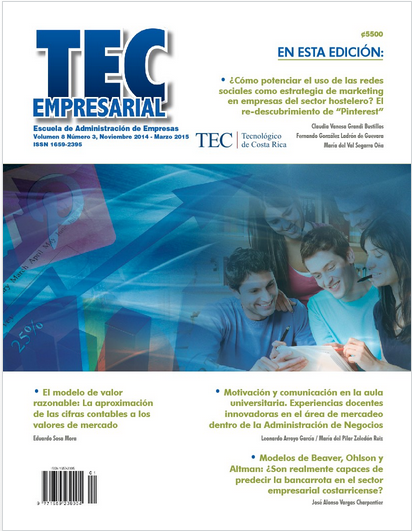El modelo de valor razonable: La aproximación de las cifras contables a los valores de mercado (The fair value model: The aproach of the accounting figures to the market values)
Contenido principal del artículo
Resumen
Desde hace muchos años, en el ámbito académico y en el profesional de la contabilidad, se debate acerca de la importancia de que los estados financieros presenten los activos y pasivos de acuerdo con sus valores de mercado, con el fin de lograr una mejor aproximación a los valores económicos de las empresas. Esto ha propiciado que, en las Normas Internacionales de Información Financiera (NIIF), haya adquirido relevancia el modelo del valor razonable, según el cual los activos y pasivos se miden por sus valores
de mercado. La adopción de este modelo significa la instrumentación de la teoría del valor de la empresa y una mayor aproximación de la contabilidad a la teoría de las finanzas, cuyos beneficios deben sopesarse con los riesgos asociados a la obtención de cifras contables a partir de precios de mercado y de supuestos acerca de eventos esperados en el futuro. Este artículo expone los alcances de la adopción de ese modelo en el esfuerzo por lograr que los estados financieros representen fielmente las realidades económicas de las empresas.
Abstract
Since many years ago in the Accounting academic and professional circles there is a debate about the importance that the financial statements represent the assets and liabilities according with their market values, in order to get a better approximation to the economic values of the enterprises. Because of this the fair value model has gained relevance in the International Financial Reporting Standards (IFRS). According with this model, the assets and liabilities are measured by their market values. The adoption of
this model means the implementation of the theory of the firm and a greater approximation the Accounting to the Financial Theory, whose benefits must be weighted with the risks of getting accounting figures by using market prices and assumptions about future events. This paper expounds the scopes of adopting this model in the effort to assure that the financial statements represent faithfully the economic realities of the enterprises.
Detalles del artículo
La versión digital de la revista se encuentra registrada bajo la licencia Creative Commons BY-NC-ND 4.0. Por lo tanto, esta obra se puede reproducir, distribuir y comunicar públicamente sin propósitos comerciales, siempre que: 1. Se reconozca el nombre de los autores y la revista Tec Empresarial, y 2. No remezcle, transforme o haga una creación a partir del original.
Los autores conservan los derechos de autor y ceden a la revista el derecho de la primera publicación y de que pueda editarlo, reproducirlo, distribuirlo, exhibirlo y comunicarlo en el país y en el extranjero mediante medios impresos y electrónicos. Por otra parte, el autor declara asumir el compromiso sobre cualquier litigio o reclamación relacionada con derechos de propiedad intelectual, exonerando de responsabilidad a la Escuela de Administración de Empresas del Tecnológico de Costa Rica.


